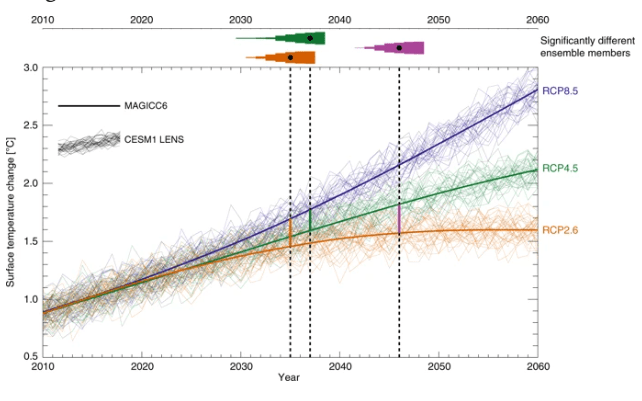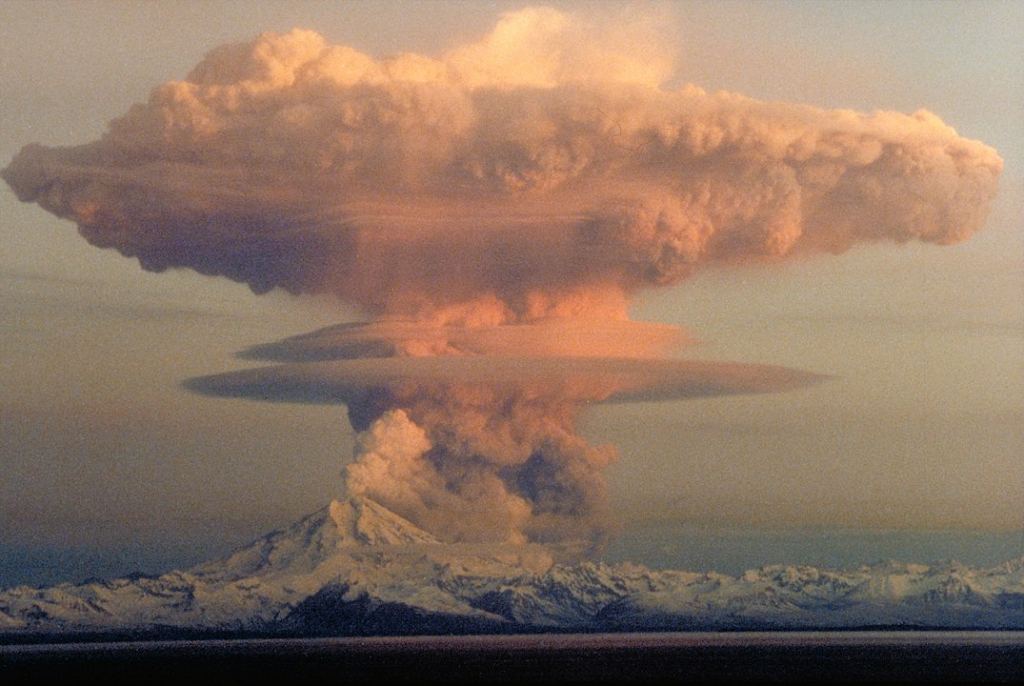If—or hopefully when—we cut our Greenhouse Gas (GHG) emissions, we won’t notice much difference in the climate. The Earth’s natural systems take time to absorb carbon from the atmosphere. We may have to wait decades for the temperatures to drop.
Of course, that doesn’t mean we shouldn’t do it. It’s just that we have to temper our expectations a little.
This sobering news is in a new study from scientists at CICERO, the Center for International Climate Research in Norway. The lead author is Bjørn H. Samset. The title of the study is “Delayed emergence of a global temperature response after emission mitigation,” and it’s published in the journal Nature Communications.
“Climate change will continue for several decades. The challenge facing us now is how to limit global warming as much as possible, and as rapidly as possible.”
Bjørn H. Samset, Lead Author, CICERO
We know that the planet is warming due to our emissions. One of scientists’ tasks is to model how that warming will proceed and what effects it will have, and how we can mitigate them. But they’re also modelling what reductions in emissions will mean for the climate, and how the climate will respond to those reductions.
“Human-induced climate change can be compared with a tank ship at high speed and in big waves,” said lead author Samset in a press release. “If you want the ship to slow down, you will put the engine in reverse, but it will take some time before you start noticing that the ship is moving more slowly. It will also rock back and forth because of the waves,” Samset explains.
The models in the study showed that even if we severely restricted our emissions—to near zero—it would still be 2033 before the climate responded by starting to cool. That’s not realistic of course, but it does illustrate the problem.
What’s hopefully more realistic is what’s called RCP2.6, a term used in climate science. RCP stands for Representative Concentration Pathways, and it’s a measure of GHG concentrations in the atmosphere, rather than emissions. RCP2.6 is considered a “very stringent” measure in climate science. It requires that CO2 emissions start declining by the year 2020 (Hello!) and reach zero by the year 2100. Stringent indeed.
If we did reach RCP2.6 by this year, then we would have to wait until at least the year 2047 to see any benefit.

These are not necessarily absolutely accurate predictions. It’s modelling, and there’s no way we can absolutely know how long it’ll take for the Earth to start cooling again if we get our GHG emissions under control. Rather, it illustrates what we’re up against as we try to transition to another energy regime.
The key takeaway is that the longer we wait to reduce our emissions meaningfully, the longer we have to wait to get some climate relief.
“Just like it took some time to establish that global warming is happening, we will need to have some patience before we can determine that the actions taken to limit global warming are having the desired effect.”
Bjørn H. Samset, Lead Author, CICERO
“If we are to reach the Paris Agreement ambition of limiting global warming to no more than 2°C – or less – the first step will be to slow down the warming process,” said Samset. “But although the necessary emissions reductions are effective from day one, it will take some time before we can measure this effect with certainty,” Samset said.
Though our GHG emissions have an enormous effect on the climate, they’re not the only thing affecting it. The climate is a natural system, and it has natural variability. The researchers tried to include that in their models. As they write in their paper, “Other effects, such as feedbacks through excitation of modes of variability, geophysical processes not properly treated in the underlying models, and events such as volcanic eruptions, may add further complications to such a detection.”
“Just like it took some time to establish that global warming is happening, we will need to have some patience before we can determine that the actions taken to limit global warming are having the desired effect,” Samset explains.

“The inertia and internal variability of the climate system, however, will delay the emergence of a discernible response even to strong, sustained mitigation,” the authors write in their paper.
Samset says that the global coronavirus pandemic provides a useful analogy. “The effects of climate cuts can be compared with those resulting from social distancing during an epidemic. They work from day one, but because of the incubation time, it will take some time before you can see the effect on the infection rates,” Samset says.
“Similarly, all reductions in warming emissions will lead to less heat being absorbed, but it will take some time before we can measure this effect,” said Samset. “Luckily, there are other methods we can use instead. We can estimate emissions reductions very quickly, and if there is a slower increase in the amount of greenhouse gases in the atmosphere, we will see it,” Samset adds.
“But for temperature, which is what we really care about – and which, among other things, has an impact on the increased frequency and severity of extreme weather – it will take decades before we will be able to measure the effect,” he says.
There are many so-called “climate forcers” or different GHGs. The team of researchers tried to model all of them. But there’s a particular focus on carbon dioxide and methane, the two GHGs with the largest effect on climate warming. CO2 because there’s so much of it, and methane because it’s such a strong climate forcer.

“The human-induced emissions with the biggest impact on global warming are CO2 and methane. If these emissions are reduced very strongly, we will see the effect quickly. But if reductions follow more realistic pathways, it will unfortunately take longer,” said co-author J.S. Fuglestvedt.
Scientists have been warning us about climate change for decades now. And now we’re at a point where we need to reduce emissions meaningfully and rapidly, or else face some nasty consequences. And sadly, it’s the world’s poorest people who will suffer the most. But even though the reduction has to happen quickly, we can’t expect to see the result too quickly.
“This paper is about managing our expectations,” the authors write. “We performed this study partly to remind us all that things will take time. Today, the Paris Agreement targets, and public attention, are mainly focused on the change in global surface temperature, but this is among the slowest responding measurements we have for the effect of emissions reductions,” says Samset.
“This does not mean that the cuts are not having any effect. It simply means that we need to be patient. Climate change will continue for several decades. The challenge facing us now is how to limit global warming as much as possible, and as rapidly as possible,” he adds.
As much as possible. And as rapidly as possible.
More:
- Press Release: New study shows global temperature responds slowly to emissions cuts
- Research Paper: Delayed emergence of a global temperature response after emission mitigation
- Universe Today: We Have the Technology. Airplanes Could Spray Particles into the Atmosphere to Battle Climate Change. But Should We?


Back yourself into a corner. A few years back, a small group of scientists claimed that they unlocked a method to ‘see’ into the depths of the sun. One of the things that they noticed was our sun was getting ready to go into a cold spell. This spell started in the early 2020’s. So I would say next year, but could be two to three years off. Now every ‘weather scientist’ has us getting hotter. My own observations are saying we’re getting colder. Next year will be the beginning of this cooling trend. Let’s see which wins: Man-made global warming, or Sun-made global cooling. My money is on that big fire in the sky that controls 99% of our weather.